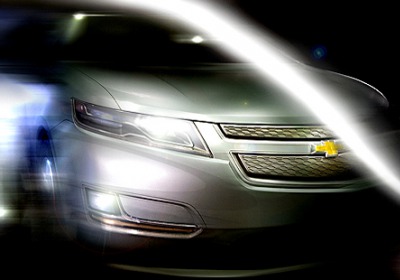Chevrolet Volt visits the wind tunnel
Thu, 13 Dec 2007By Ben Whitworth
First Official Pictures
13 December 2007 10:00
Back in January the Volt was easily the surprise of this year’s Detroit motor show. Chevrolet reckoned its radical electric four-seater was such a breakthrough that it would transform the way we drive when it arrived in showrooms by the end of the decade.
And it’s just announced that the production model will be significantly more efficient at scything through the air: the Volt has been sent to GM’s wind tunnel where Chevrolet’s aerodynamicists has smoothed off some of its blunt surfaces to create a shape that is 30 percent more effective at cutting cleanly through the air at speed than the original concept. That’s a massive saving when you consider air drag account for one in every five gallons of fuel a car burns. But that's compared to a concept car so we wait to see what the production car's drag coefficient will be.
Here’s how it works. Plug the Volt into your mains for three hours and its small and powerful 250v electric engine will give you a range of 40 miles, which according to GM is enough for three quarters of most commutes into work. If you need to go further, a 1.0-litre three-pot combustion engine cuts in when the battery dies. But the engine doesn't drive the wheels - it acts as a generator and charges the battery, allowing the engine to be located anywhere in the car and doing away with the need for a bulky and heavy gearbox.
The result is an exceptionally roomy car – the fuel tank, batteries and engine can be placed anywhere in the car for optimised packaging – that can drive from Land’s End to Edinburgh without having to stop for a refuel. With a full charge and a full tank, you'll be able to cover 640 miles. If you drive 60 miles between charges you'll get 150mpg, as the petrol engine will only cut in for the last third of your trip. Driving the Volt for a year would save 4.4 tonnes of CO2 and 418 gallons of unleaded compared to a traditional petrol car.
By Ben Whitworth



